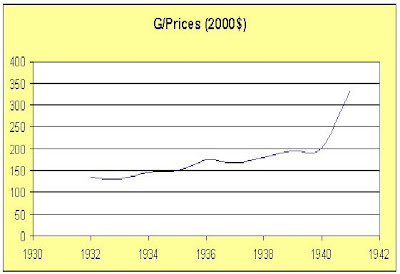In Value and Capital, Hicks's treatment of work and leisure is laconic. It appears virtually as an aside in his discussion of the difference between the consumer's demand, if it is assumed to be fixed in terms of money, and what happens if the consumer is also a seller with a fixed stock of some commodity, who might hold back some of that commodity for his own consumption depending on the market price. "Thus a fall in wages," Hicks wrote,
may sometimes make the wage-earner work less hard, sometimes harder; for on the one hand, reduced piece-rates make the effort needed for a marginal unit of output seem less worth while, or would so, if income were unchanged; but on the other, his income is reduced, and the urge to work harder in order to make up for the loss in income may counterbalance the first tendency (p. 36).
The salient detail to note about Hicks's 'wage-earner' is that he is being paid by piece-rates, not on an hourly wage. That is to say, his income presumably varies in proportion to his output, not as a function of the number of hours he spends on the job or the number of hours of leisure he sacrifices to do so. The possibility that he may "work less hard" could thus mean either that he would exert less effort or that he would reduce the amount of time he worked. Or it could mean some combination of the two.
The dichotomy of working harder or less hard also introduces a certain ambiguity into exactly what is being traded-off, particularly if the wage-earner's hours at work remained unchanged. In the latter case, working less hard could be interpreted as a way of making work time more enjoyable (or less painful) and thus would be a backdoor re-introduction of the rejected pain-cost theory of value.
Next
Abstract: Sidney Chapman's theory of the hours of labour, published in 1909 in The Economic Journal, was acknowledged as authoritative by the leading economists of the day. It provided important insights into the prospects for market rationality with respect to work time arrangements and hinted at a profound immanent critique of economists' excessive concern with external wealth. Chapman's theory was consigned to obscurity by mathematical analyses that reverted heedlessly to outdated and naïve assumptions about the connection between hours and output. The Sandwichman is serializing "Missing: the strange disappearance of S. J. Chapman's theory of the hours of labour" on EconoSpeak in celebration of the centenary of publication of Chapman's theory. (To download the entire article in a pdf file, click on the article title.)





